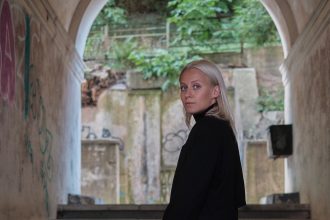Women’s Voices. Stories from the Kaunas Textile Industry is the name of the exhibition that will be opened in Kaunas Picture Gallery in autumn. Thanks to Mažosios istorijos community platform, the seldom-heard voices of women who worked in Kaunas textile factories – barely any of them remained – will be heard in the exhibition space.
Did you know that in the 1960s 1,731 employees worked at the Kauno audiniai factory, of which only 100 remained before the factory went bankrupt around 2003? The factory produced silk fabrics. “In 1979 – 1980, lighter fabrics, such as Vėjelis, Žara, Žagare, Astra, Svyruoklis, etc., were being produced. During that period, the factory provided the consumer with 25 – 30 names of silk fabrics every year. 70 percent of production consisted of dress fabrics, and the rest was upholstery, technical, and haberdashery fabrics. 40 percent of types of dress fabrics and 70 percent of patterns were renewed annually. One-third of the production was marked with the state quality mark. Dalia Eitutienė, the author and designer of the fabric named Vėjelis, has been awarded an honorary diploma from the Ministry of Light Industry of the USSR,” Virginija Skučaitė writes in her book Kauno audinių istorija 1930 – 1996 (the history of Kauno audiniai), published in 1997.
Another giant factory named Drobė started weaving woollen fabrics in 1920. The factory was growing and expanding until the 1990s. It contained libraries and gyms. And “the quality of the materials was indicated by the fact that they were also bought by a Moscow tailor shop, which made suits for the Kremlin party officials,” Kęstutis Almonaitis writes in his memoir titled Inžinierius sovietmečiu (Engineer in the Soviet era) published in 2022.
In the photos published here, which come from the personal archives of the women, who worked in the textile factories of Kaunas, you can see the behind-the-scenes of the stories, moments from the banquets, sports competitions, and children’s parties organized in the factories.




